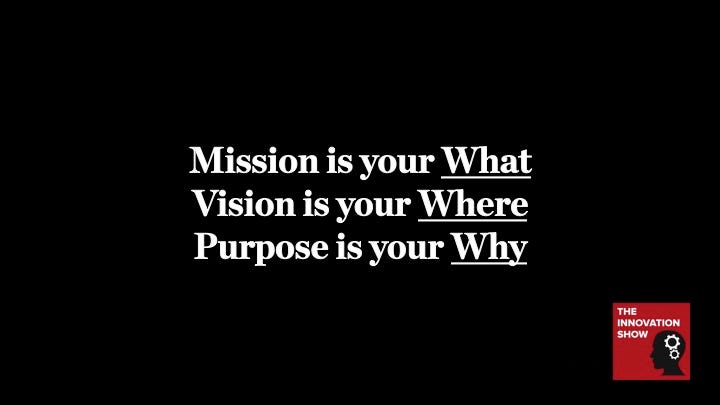
“What will become compellingly important is absolute clarity of shared purpose and set of principles of conduct sort of institutional genetic code that every member of the organization understands in a common way, and with deep conviction.” — Dee Hock, Founder and CEO Emeritus, VISA
Many entrepreneurs struggle when their business moves beyond startup phase. It gets difficult for founders when they no longer know everyone in the business they started. In the early days, they were involved in hiring every new team member and they convinced them to join by sharing their vision and the company mission. When a business grows substantially to become a multinational company, how do you maintain the same sense of purpose that attracted people to your business in the first place? How do you attract the right people when you no longer have the time or scope to hire each and every one of them?
That is the focus of this Thursday Thought.
Dunbar’s Number
“There is no question that the dynamics of organisations change once they exceed about 150 or so,” says Dunbar. “The Hutterites deliberately split their communities at this size in order to avoid having to have both hierarchies and a police force. Keeping things below 150 means you can manage the system by peer pressure, whereas above 150 you need some kind of top down, discipline-based management system.” — Robin Dunbar
Anthropologist and Oxford University evolutionary psychology professor Robin Dunbar is best known for his discovery known as Dunbar’s number. Dunbar found a correlation between primate brain size and average social group size. By using the average human brain size and extrapolating from the results of primates, he proposed that humans can comfortably maintain only 150 stable relationships (including past colleagues, such as high school friends, with whom a person would want to reacquaint himself or herself if they met again.) Dunbar explained it informally as “the number of people you would not feel embarrassed about joining uninvited for a drink if you happened to bump into them in a bar”.
Proponents of Dunbar’s number contend that numbers larger than 150 require more restrictive rules, laws, and enforced norms to maintain a stable, cohesive group.
You may be familiar with the name “Gore-Tex”, a waterproof, breathable fabric often used in outdoor and adventure apparel (think Timberland boots or Patagonia Jackets). Years before Dunbar’s number was revealed to the world, W. L. Gore & Associates proactively and effectively managed the growing pains of the organisation. Today, the enterprise employs over 9,500 employees (known as associates within the organisation) in over 25 countries. Despite huge growth, the company still maintains a golden rule; it doesn’t allow the number of associates in any of the factories (or sites) exceed 150–200 people! Once it becomes necessary to exceed the 150 number, they build a new self-contained factory next to an existing one. One of Bill Gore’s core beliefs was that once a factory reached a certain size, “we decided” became “they decided.”
Dunbar’s number partially explains why large organisations often struggle with corporate culture. It may suggest why some organisations split into silos and those silos begin to compete with one another rather than their competitors. In today’s turbulent business environment, spending precious energy on internal politics, power struggles, or silo battles means you will eventually lose your war.
We are experiencing a great revolution in today’s workplace, a workplace built on the outdated mental foundations of the industrial revolution, the church and the army. That workplace is disintegrating. Today’s workforce increasingly demands to operate on its own terms, work from home, from shared office spaces, or even from coffee shops. In this new workplace, how do we energise, unite and inspire our people consistently?
In this new world of work, the need for a unifying purpose is more important than ever before.
CEOs must be Chief Storytelling Officers
Our guest on this week’s innovation show is Carmine Gallo. We discuss the importance of storytelling in our world of globalisation, automation, and artificial intelligence, but also a world where people are craving purpose. Carmine shares thoughts from his latest best-selling book “Five Stars — The Communication Secrets To Get From Good To Great”.
Carmine emphasises the importance of a founder’s story in the company narrative. This story is known as the origin story. For stories to be successful, Carmine suggests we use “the pathos principle”. In the 4th century BC. Aristotle suggested to be successful, a persuasive argument must include the following key ingredients:
- Ethos: The credibility of the speaker
- Pathos: An emotional connection to the audience
- Logos: A logical argument
It is from this Carmine derives “the pathos principle,” where the origin story of a business must include an emotional connection with an audience. Carmine shares the example of Nike, where founder Bill Bowerman wanted to overcome the challenge of not being able to find a pair of training shoes that would grip the college running track. With that Bowerman set out to solve his problem and used waffle irons to create a new grip for running shoes. The Nike origin story includes the tragic death of one of Bowerman’s athletes Steve Prefontaine. The Nike story is a rags-to-riches story that contains many elements of pathos to encapsulate an audience.
The origin story can be so much more than a simple piece of company folklore or a narrative that once used to gain investment. An origin story can become your beacon to tell the world what your company stands for. An authentic origin story tells a lot about the originator.

To build a team in any organisation, you must first create a mission. A mission can be “Let’s get to the top of that mountain by a certain time”. Next comes a vision, which is “What it will look like (vision) when we get there”. A purpose is your why, “why you are doing what you do in the first place”. Purpose can represent your company’s overarching goal, your project’s goal, why you are doing whatever it is that you do. When a purpose becomes core to your company story, it not only informs the public who you are and what you stand for, but it educates everyone who interacts with you works for you and may work for you in the future. The story is a drop that ripples out to every touch point of your organisation.

When an organisation has a compelling purpose, it gives people a reason to come to work every day; it gives them a direction; it gives them MEANING.
Nike does this to such an extent that they train their people in how to tell the story. Nike even brings people to the historic sites associated with the story to make it more impactful. In this way, the trained storyteller tells everyone the origin story; the stories can much stronger than anything else. Businesses such as FedEx rightly obsess over what they call the last mile. The realisation that the last touch point with a client was their drivers, FedEx trained their people in customer service, dress code and ensured FedEx vehicles were impeccably clean.
In a similar fashion, your company should obsess about your story. Your story is what people buy, buy into and this will become increasingly so. If you agree that this is the case, then the CEO must be the chief storytelling officer in the organisation.
The established learning benefits of repetition is an integral feature in the design of some educational television programs for children. This is why children ask for stories over and over; it is a proven way to learn. If adults are simply children with longer legs, then we must also hear stories repeated in order to fully absorb them. The simpler the story, the better. The story is an essential element to provide the scaffolding for your successful work practices.
We associate the word abracadabra with magicians, but it is an Aramaic term that translates into English as, “I will create as I speak.” A Chief Storyteller Officer inspires creation with her words.
The Chief StoryTelling Officer has the vital role to envision what does not already exist, imagine it done, articulate what it will look like and then co-create the roadmap of how to get there. She has an immense responsibility to tell a compelling story of where the company came from, where it is going, and why it is going there.
IF YOU ARE INTERESTED IN CORPORATE STORYTELLING WORKSHOPS, DROP ME A LINE
Episode 134 of the Innovation Show is “Five Stars: The Communication Secrets to Get from Good to Great with author Carmine Gallo.”
As the forces of globalisation, automation, and artificial intelligence combine to disrupt every field and every career, having a good idea isn’t good enough. Mastering the ancient art of persuasion is the key to standing out, getting ahead, and achieving greatness in the modern world. Communication is no longer a “soft” skill — it is the human edge that will make you unstoppable, irresistible, and irreplaceable — earning you that perfect rating, that fifth star.
Carmine Gallo is the bestselling author of many titles including Talk Like TED, The Presentation Secrets of Steve Jobs, The Storytellers Secret and the focus of today’s show “Five Stars: The Communication Secrets to Get from Good to Great”
We talk:
Persuasion offering a competitive advantage
We need to focus on a specific and time specific goal
What we can learn from John F. Kennedy
The NASA story
Interview skills
Why we should keep our presentations brief
Verbal content versus visual content
Corporate storytelling
The Pathos Principle
Origin Stories
The element of struggle
The example of Nike
Psychological Safety
The use of simple language
Winston Churchill
John Chambers, Cisco CEO, Emeritus
Have a listen:
SoundCloud https://lnkd.in/gBbTTuF
Spotify http://spoti.fi/2rXnAF4
iTunes https://apple.co/2gFvFbO
TuneIn http://bit.ly/2rRwDad
More about Carmine and his books here:
Tags: Carmine Gallo, 5 stars the book, 5 stars, Presentation Skills, Corporate Storytelling, Talk like TED, Steve Jobs Presentation Skills, Storytelling Secret, John Chambers Cisco, JFK Speeches, Winston Churchill Speeches, Innovation, Psychological safety

